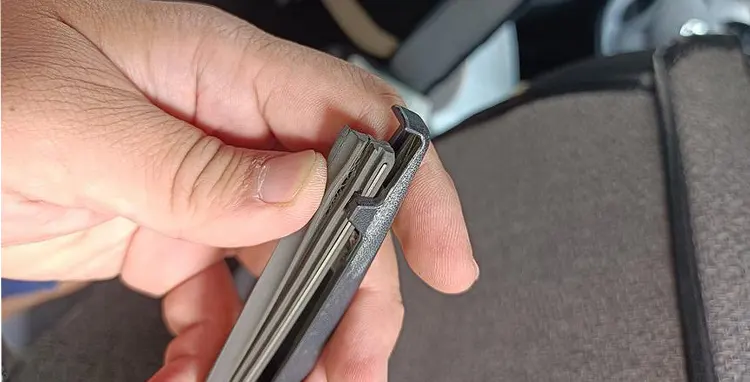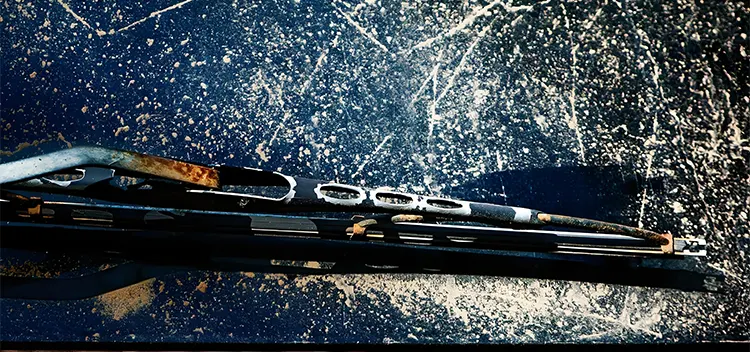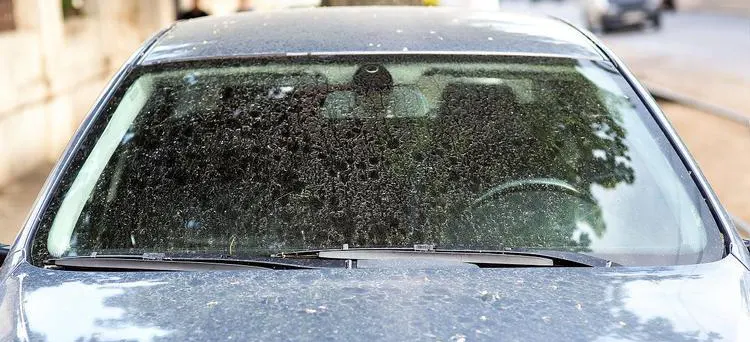Conventional wiper blades are still widely used in the aftermarket because they’re low-cost and simple to replace. But many drivers complain about streaking, squeaking, or chattering wipers—issues that not only reduce visibility but also cause a spike in service returns.
For auto parts wholesalers, 4S shop technicians, and fleet managers, understanding the root causes helps shops choose better products, service vehicles faster, and cut down on costs.
Low-grade rubber hardens over time. Sun, ozone, and extreme temperature swings make cheap natural or synthetic blends brittle and stiff.
Lack of lubricating coating: high-end wipers usually coat the surface of the rubber strip with a layer of graphite or silicone to make wiping smoother; while low-priced products often omit this step, resulting in high friction, easy jumping, and squeaking.

Conventional wiper blades rely on several metal frames to apply pressure, which will deform or rust over time, causing the wipers to not fit the windshield completely, resulting in areas that cannot be wiped cleanly.
In contrast, boneless wipers are one-piece molded, so the pressure distribution is more even and the wipers are wiped more cleanly, which is why many original factories have gradually switched to them.

If there is oil film, dust, or scale on the glass, it will affect the contact between the wipers and the glass, causing jumping or not being wiped cleanly. Regularly cleaning the windshield with alcohol cleaning fluid or glass cleaner can greatly improve the wiper effect.
4. Improper installation or wrong angle
If the spring force of the wiper arm is too large or too small, it will affect the wiping effect.
Worn or loose connectors can also cause the blades to wobble or skip.

Step-by-step Wiper Blade Installation Tutorial
Choose the right product: It is recommended to use high-performance wipers made of EPDM synthetic rubber, which are much more durable than ordinary rubber.
Training materials provided: With installation instructions and torque recommendations (the standard for most passenger car wiper arms is 25-35 Nm).
Daily inspection suggestions for maintenance technicians
Check whether the wiper rubber strips have cracks or the skeleton is deformed.
Test whether there is an oil film on the glass surface (whether the water can slide evenly).
Use a spring scale to check the wiper arm pressure (usually 7-12 Newtons).
Can be paired with glass polishing or coating services to increase the customer unit price.
In areas with harsh climates (such as hot deserts or salt roads in winter), it is recommended to replace wipers every 6 months.
You can negotiate with suppliers to purchase coated wipers in bulk (such as wipers with SPOTLESS coating) to extend their service life.
Conventional wiper blades may be cheap and easy to install, but they often don’t last, and that can mean more headaches and higher costs for businesses. Using better rubber materials, installing them correctly, and showing customers how to care for their blades can save shops and fleets from a lot of return visits. For drivers, this translates to clearer windshields and safer journeys—a win for service providers and end-users alike.
Want to know the wholesale price of high-performance coating wipers? Welcome to contact our OEM consultant at wiperblade8@xmyujin.com.
